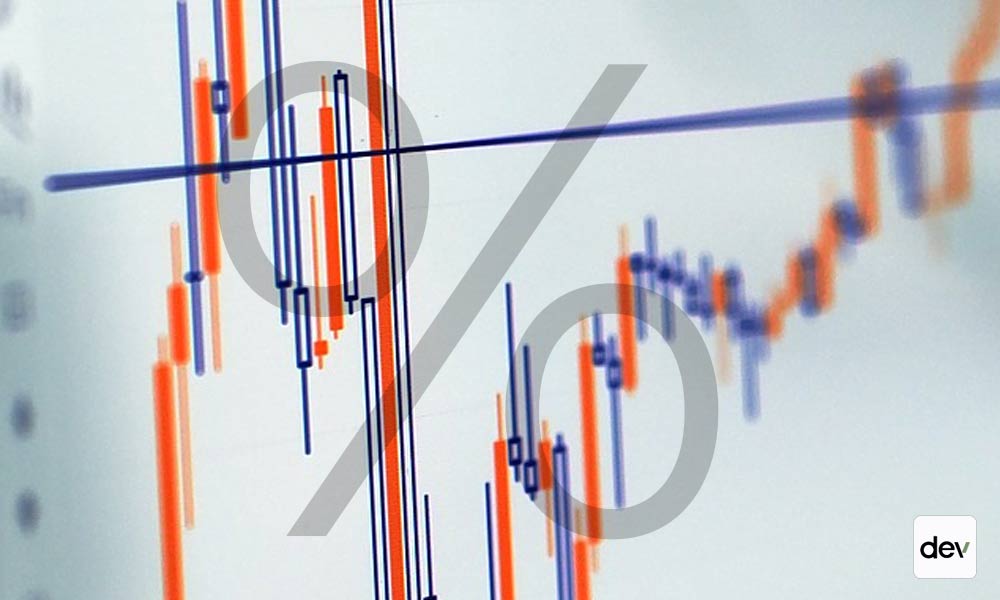
Finance
Understanding Interest Rate Spread and Cap Rate in CRE
Explore the concept of the interest rate spread and its critical role in commercial real estate finance. Understand its definition, how it’s calculated, and its significance in evaluating loans, investments, and market trends for informed decision-making.
How Interest Rate Spread Impacts CRE Investments
In real estate, it’s common to finance property deals with debt (aka leverage). For one, it’s a way to overcome the high barrier to entry since many investors don’t have the capital to buy a commercial property with cash. However, it’s also a way to enhance your returns. Depending on the deal, leverage can either help or hurt your ROI.



Positive Leverage
To understand how more about leverage, we spoke with Alex Judge, Director of Investments at 615 Ventures.
“In investing, when we hear the word ‘leverage’ we typically look at it as a positive,” Judge said. “Leverage (debt) can allow you to purchase an asset with a lot less money and still participate in the upside of the asset’s cash flow and appreciation. Typically, we hear about how leverage increases your investment’s return.”
Take the following example: You buy a property that costs $100,000 and generates $7,500 in yearly cash flow. That means it returns—or has a cap rate of—7.5% ($7,500 / $100,000). However, that’s only if you pay for the property with cash.
If you instead take out a $75,000 loan on the property, the ROI could change. Firstly, your initial investment drops from $100,000 to $25,000. Assuming the loan is amortized over 25 years and has a 5% interest rate, you will also have to pay about $5,000 per year in debt. That lowers your yearly cash flow from $7,500 to $2,500 ($7,500 cash flow minus $5,000 debt service).
To calculate your new ROI, simply divide the new cash flow of $2,500 by the new initial investment of $25,000. This gives you 10%, a marked improvement from the 7.5% ROI had you purchased the property with cash.
Bottom line: Sometimes leverage can boost your returns (in this case by 2.5%). So even if you have the capital to pay in cash, it may make sense to finance the deal to get a better return while freeing up capital (in this case $75,000) to invest elsewhere.


Negative Leverage
That said, leverage doesn’t always boost returns. Sometimes it lowers them.
For example, say you buy the same property under the same loan terms described above, but the interest rate increases from 5% to 6.5%. In other words, the difference between the loan’s interest rate and the cap rate (aka the interest rate spread) narrows.
This would increase your yearly debt costs from about $5,000 to $6,000 and lower your yearly cash flow from about $2,500 (cash flow from above example) to $1,500 due to the additional $1000 of debt costs per year. Consequently, your ROI would fall from 10% to 6% ($1,500 / $25,000).


In this case, financing the property actually hurts your returns, and you would be better off paying for it in cash for a 7.5% return instead.
The Relationship Between Cap Rate and Interest Rate Spread
One way to gauge when leverage will help or hurt your returns is to understand the relationship between cap rate and interest rate spread (aka debt spread or loan spread).
The cap rate is the ROI on an all-cash investment. In the example above, it’s 7.5%. The debt spread is the difference between the cap rate and the interest rate on the loan. In the 5% mortgage example, the interest rate spread is 2.5% (7.5% – 5%). In the 6.5% mortgage example, it’s 1% (7.5% – 6.5%).
“Ultimately, the bigger the cap rate, the better the asset deal. The bigger the debt spread, the better the financing deal,” Judge said. “They are distinct, but interrelated.”
“Think about it this way. You have to negotiate a sale price with the seller. Ultimately that sets the cap rate. Once you’ve locked in that price, or in conjunction with that negotiation, you separately work with your lender (likely a bank or life insurance company) to negotiate the deal’s terms.”


Understanding Interest Rate Spread Leads to Better Investment Decisions
Sometimes you may have your loan terms settled before the purchase price. In that case, understanding interest rate spread can help you quickly gauge what cap rate (and by extension purchase price) will generate a favorable ROI. That way, you know what you are and aren’t willing to pay for a property.
For example, if you qualify for a 5% mortgage rate, a property would need a cap rate of over 5% to provide positive leverage. Anything less would result in negative leverage.
“If you are using leverage, you cannot make a good purchase price offer if you don’t understand how the cost of leverage will affect your return,” Judge said. “It may make sense to use ‘unhelpful’ leverage in many circumstances, but it’s important to recognize it as such.”
Frequently Asked Questions (FAQs)
How do you calculate debt rate spread?
To calculate debt rate spread, subtract the interest rate on the mortgage from the asset’s cap rate. For example, a property with a 7.5% cap rate financed with a mortgage that has a 5% interest rate would have a debt rate spread of 2.5% (7.5% – 5%).
What happens to debt rate spreads when interest rates rise?
When interest rates rise, debt rate spreads narrow. For example, if interest rates rise from 5% to 6.5%, a property with a cap rate of 7.5% would see the debt rate spread narrow from 2.5% to 1% (7.5% – 5% vs. 7.5% – 6.5%).
What is the difference between interest rate margin and spread?
Interest rate margin refers to the difference between the interest rate a lender charges on a loan and a benchmark rate. For example, many banks base their interest rates on a key rate, such as the prime rate or LIBOR (London Interbank Offered Rate). Whatever percentage the bank charges borrowers above the key rate is its profit.
Interest rate spread (or debt or loan spread) is a broader term that encompasses interest rate margin but can also refer to the difference between any two rates. For example, it can refer to the difference between the interest rate on a mortgage and the ROI on a property investment.







